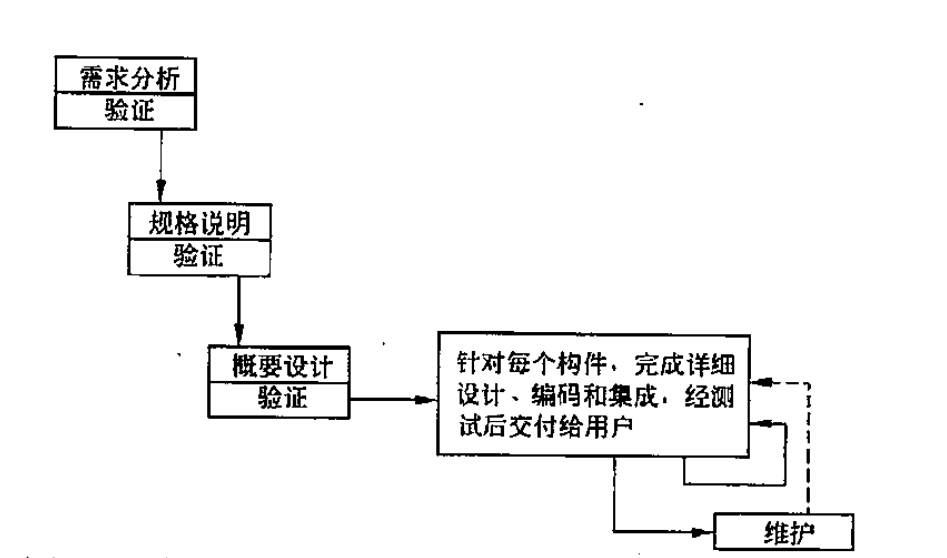Waterfall model
Traditional software engineering. Systematic, sequential software development methods.
Features:
- Force software personnel to use standardized technical methods;
- Strictly stipulate the technical documents that must be submitted at each stage;
- A strict technical review and management review must be conducted before the end of each phase.
Disadvantages:
- Before the executable software product interacts with the user, the user can only understand the future product through the document;
- There is a lack of effective communication between developers and users, and the final product may not meet user needs.
Prototype development (requirement)
Use prototypes to quickly describe user requirements ; when requirements are ambiguous, prototypes can help users and developers quickly understand what needs to be done; prototypes are focused on where users can see
One.
Advantages: Software products developed using this software process can usually meet the real needs of users
Incremental model (component)
Design, code, integrate and test software products as a series of incremental components.
Each component is composed of several modules, which can complete relatively independent functions.

Advantages: able to submit products that can complete part of the work to users in a short time
By gradually increasing the function of the product, users can gradually learn the function of the product and reduce the design that a brand-new product brings to the user.
Disadvantages: higher requirements for software development engineers, requiring them to develop more open software products.
Spiral model (risk)
Using prototypes, a risk analysis process was added before each stage.
advantage:
Reuse of existing software
Help to make software quality an important goal of software development;
Reduced the risk of over-testing or under-testing;
Fountain model
Describe the object-oriented software development process. It is considered that each stage of software development cycle from bottom to top is to iterate without gaps. Driven by user needs and driven by objects.